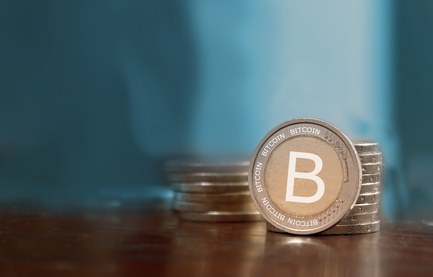FMLS:24 | Shaping the Next Era of Financial Evolution
FMLS:24 | Shaping the Next Era of Financial Evolution
FMLS:24 | Shaping the Next Era of Financial Evolution
FMLS:24 | Shaping the Next Era of Financial Evolution
FMLS:24 | Shaping the Next Era of Financial Evolution
FMLS:24 | Shaping the Next Era of Financial Evolution
Welcome to FMLS:24 – the premier event where influential brands and leaders in trading, payments, fintech, and digital assets come together!
Join over 2,500 industry professionals, engage with 150+ expert speakers, and discover endless opportunities with 70+ top exhibitors. FMLS:24 is where senior executives and decision-makers gather to close deals, forge new partnerships, and strengthen connections with long-term clients.
Whether you’re in finance, technology, or payments, this summit is your gateway to future growth, meaningful collaborations, and industry-leading insights.
👉 Don't miss out – secure your ticket now at https://events.financemagnates.com/ZQEYy0?utm_source=youtube&utm_campaign=fmls24-awareness&utm_medium=video&RefId=MLS%3A24+Video+Promo
#fmls #fmls24 #fmevents #financemagnates #forex #payments #crypto #events #london #fintech #ai #generativeai #technology #onlinetrading #forex #investing #investors #tech
📣 Stay updated with the latest in finance and trading!
Follow FMevents across our social media platforms for news, insights, and event updates. Connect with us today:
🔗 LinkedIn: https://www.linkedin.com/showcase/financemagnates-events/
👍 Facebook: https://www.facebook.com/FinanceMagnatesEvents
📸 Instagram: https://www.instagram.com/fmevents_official
🐦 Twitter: https://twitter.com/F_M_events
🎥 TikTok: https://www.tiktok.com/@fmevents_official
▶️ YouTube: https://www.youtube.com/@FinanceMagnates_official
Don't miss out on our latest videos, interviews, and event coverage. Subscribe to our YouTube channel for more!
Welcome to FMLS:24 – the premier event where influential brands and leaders in trading, payments, fintech, and digital assets come together!
Join over 2,500 industry professionals, engage with 150+ expert speakers, and discover endless opportunities with 70+ top exhibitors. FMLS:24 is where senior executives and decision-makers gather to close deals, forge new partnerships, and strengthen connections with long-term clients.
Whether you’re in finance, technology, or payments, this summit is your gateway to future growth, meaningful collaborations, and industry-leading insights.
👉 Don't miss out – secure your ticket now at https://events.financemagnates.com/ZQEYy0?utm_source=youtube&utm_campaign=fmls24-awareness&utm_medium=video&RefId=MLS%3A24+Video+Promo
#fmls #fmls24 #fmevents #financemagnates #forex #payments #crypto #events #london #fintech #ai #generativeai #technology #onlinetrading #forex #investing #investors #tech
📣 Stay updated with the latest in finance and trading!
Follow FMevents across our social media platforms for news, insights, and event updates. Connect with us today:
🔗 LinkedIn: https://www.linkedin.com/showcase/financemagnates-events/
👍 Facebook: https://www.facebook.com/FinanceMagnatesEvents
📸 Instagram: https://www.instagram.com/fmevents_official
🐦 Twitter: https://twitter.com/F_M_events
🎥 TikTok: https://www.tiktok.com/@fmevents_official
▶️ YouTube: https://www.youtube.com/@FinanceMagnates_official
Don't miss out on our latest videos, interviews, and event coverage. Subscribe to our YouTube channel for more!
Welcome to FMLS:24 – the premier event where influential brands and leaders in trading, payments, fintech, and digital assets come together!
Join over 2,500 industry professionals, engage with 150+ expert speakers, and discover endless opportunities with 70+ top exhibitors. FMLS:24 is where senior executives and decision-makers gather to close deals, forge new partnerships, and strengthen connections with long-term clients.
Whether you’re in finance, technology, or payments, this summit is your gateway to future growth, meaningful collaborations, and industry-leading insights.
👉 Don't miss out – secure your ticket now at https://events.financemagnates.com/ZQEYy0?utm_source=youtube&utm_campaign=fmls24-awareness&utm_medium=video&RefId=MLS%3A24+Video+Promo
#fmls #fmls24 #fmevents #financemagnates #forex #payments #crypto #events #london #fintech #ai #generativeai #technology #onlinetrading #forex #investing #investors #tech
📣 Stay updated with the latest in finance and trading!
Follow FMevents across our social media platforms for news, insights, and event updates. Connect with us today:
🔗 LinkedIn: https://www.linkedin.com/showcase/financemagnates-events/
👍 Facebook: https://www.facebook.com/FinanceMagnatesEvents
📸 Instagram: https://www.instagram.com/fmevents_official
🐦 Twitter: https://twitter.com/F_M_events
🎥 TikTok: https://www.tiktok.com/@fmevents_official
▶️ YouTube: https://www.youtube.com/@FinanceMagnates_official
Don't miss out on our latest videos, interviews, and event coverage. Subscribe to our YouTube channel for more!
Welcome to FMLS:24 – the premier event where influential brands and leaders in trading, payments, fintech, and digital assets come together!
Join over 2,500 industry professionals, engage with 150+ expert speakers, and discover endless opportunities with 70+ top exhibitors. FMLS:24 is where senior executives and decision-makers gather to close deals, forge new partnerships, and strengthen connections with long-term clients.
Whether you’re in finance, technology, or payments, this summit is your gateway to future growth, meaningful collaborations, and industry-leading insights.
👉 Don't miss out – secure your ticket now at https://events.financemagnates.com/ZQEYy0?utm_source=youtube&utm_campaign=fmls24-awareness&utm_medium=video&RefId=MLS%3A24+Video+Promo
#fmls #fmls24 #fmevents #financemagnates #forex #payments #crypto #events #london #fintech #ai #generativeai #technology #onlinetrading #forex #investing #investors #tech
📣 Stay updated with the latest in finance and trading!
Follow FMevents across our social media platforms for news, insights, and event updates. Connect with us today:
🔗 LinkedIn: https://www.linkedin.com/showcase/financemagnates-events/
👍 Facebook: https://www.facebook.com/FinanceMagnatesEvents
📸 Instagram: https://www.instagram.com/fmevents_official
🐦 Twitter: https://twitter.com/F_M_events
🎥 TikTok: https://www.tiktok.com/@fmevents_official
▶️ YouTube: https://www.youtube.com/@FinanceMagnates_official
Don't miss out on our latest videos, interviews, and event coverage. Subscribe to our YouTube channel for more!
Welcome to FMLS:24 – the premier event where influential brands and leaders in trading, payments, fintech, and digital assets come together!
Join over 2,500 industry professionals, engage with 150+ expert speakers, and discover endless opportunities with 70+ top exhibitors. FMLS:24 is where senior executives and decision-makers gather to close deals, forge new partnerships, and strengthen connections with long-term clients.
Whether you’re in finance, technology, or payments, this summit is your gateway to future growth, meaningful collaborations, and industry-leading insights.
👉 Don't miss out – secure your ticket now at https://events.financemagnates.com/ZQEYy0?utm_source=youtube&utm_campaign=fmls24-awareness&utm_medium=video&RefId=MLS%3A24+Video+Promo
#fmls #fmls24 #fmevents #financemagnates #forex #payments #crypto #events #london #fintech #ai #generativeai #technology #onlinetrading #forex #investing #investors #tech
📣 Stay updated with the latest in finance and trading!
Follow FMevents across our social media platforms for news, insights, and event updates. Connect with us today:
🔗 LinkedIn: https://www.linkedin.com/showcase/financemagnates-events/
👍 Facebook: https://www.facebook.com/FinanceMagnatesEvents
📸 Instagram: https://www.instagram.com/fmevents_official
🐦 Twitter: https://twitter.com/F_M_events
🎥 TikTok: https://www.tiktok.com/@fmevents_official
▶️ YouTube: https://www.youtube.com/@FinanceMagnates_official
Don't miss out on our latest videos, interviews, and event coverage. Subscribe to our YouTube channel for more!
Welcome to FMLS:24 – the premier event where influential brands and leaders in trading, payments, fintech, and digital assets come together!
Join over 2,500 industry professionals, engage with 150+ expert speakers, and discover endless opportunities with 70+ top exhibitors. FMLS:24 is where senior executives and decision-makers gather to close deals, forge new partnerships, and strengthen connections with long-term clients.
Whether you’re in finance, technology, or payments, this summit is your gateway to future growth, meaningful collaborations, and industry-leading insights.
👉 Don't miss out – secure your ticket now at https://events.financemagnates.com/ZQEYy0?utm_source=youtube&utm_campaign=fmls24-awareness&utm_medium=video&RefId=MLS%3A24+Video+Promo
#fmls #fmls24 #fmevents #financemagnates #forex #payments #crypto #events #london #fintech #ai #generativeai #technology #onlinetrading #forex #investing #investors #tech
📣 Stay updated with the latest in finance and trading!
Follow FMevents across our social media platforms for news, insights, and event updates. Connect with us today:
🔗 LinkedIn: https://www.linkedin.com/showcase/financemagnates-events/
👍 Facebook: https://www.facebook.com/FinanceMagnatesEvents
📸 Instagram: https://www.instagram.com/fmevents_official
🐦 Twitter: https://twitter.com/F_M_events
🎥 TikTok: https://www.tiktok.com/@fmevents_official
▶️ YouTube: https://www.youtube.com/@FinanceMagnates_official
Don't miss out on our latest videos, interviews, and event coverage. Subscribe to our YouTube channel for more!






















